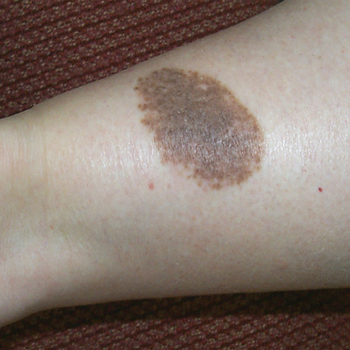Giant Nevi Removal Surgery
Children can be born with pigmented moles called genetic mole (or nevus, in particular). These represent a proliferation of melanocytes, the pigment-producing cells of the skin. When they take place, genetic melanocytic nevi can be highly varied in size and shape. They might be very small as well as trivial in appearance to huge, covering large locations of the body. Small genetic moles are those less than 1.5 centimeters in size. Giant nevi are those measuring 20cm or even more in size at birth. The objective of giant nevi removal surgical procedure is to remove the mole in its entirety or at the very least as high as is feasible.

Cause and Presentation of Giant Nevi
A hereditary nevus, including gigantic nevi, are typically considered to take place periodically, in an entirely unpredictable fashion. Little hereditary moles seen in 1 in 100 births whereas huge nevi take place a lot more infrequently-- 1 in 20,000 births. These moles are usually brown in shade. That shade might be uniform or really irregular with darker locations blended with lighter areas. Congenital nevi can also have enlarged or elevated areas, texture distinctions and excessive hair development. Since excess hair development is common, these lesions are often alternately described as giant hairy nevi. While huge genetic nevi can take place at any kind of body site, there is proneness for them to appear on the trunk, including back, abdomen, hips and butts. The scalp and face are also regularly included.
Rarely, some kids born with large congenital nevi are discovered to have much deeper participation of their cells called neurocutaneous melanosis. The melanocytes associated with this condition proliferated in the mind and also spine early in fetal advancement as well as normally present with a large scalp or trunk lesion and several smaller satellite sores. These children can experience increased intracranial pressure, seizures, or other neurological issues. An MRI can assist to diagnose this problem if it is presumed.
Types of Giant Nevi
There are several types of congenital nevi, depending on their size and appearance.
1. Large or Giant
Nevi grow as your body grows. A nevus that will certainly grow to a grown-up size of 8 inches or more across is thought about a gigantic nevus.
On a newborn child, this means that a mole that determines 2 inches throughout is taken into consideration a large one. However, because the head grows somewhat less than the remainder of the body, a mole that measures 3 inches throughout on the head of a newborn is additionally categorized as a giant.
2. Small and Medium Congenital Nevi
A congenital nevus that gauges less than 1.5-CM across is identified as little. These are relatively typical, happening in regarding 1 in every 100Trusted Source newborn kids.
A nevus that's expected to grow to a grown-up dimension of 1.5 to 19.9 centimeters throughout (5/8 to 7 3/4 inches) is identified as a medium. Medium size of nevi happens in about 1 in every 1,000 infants.



